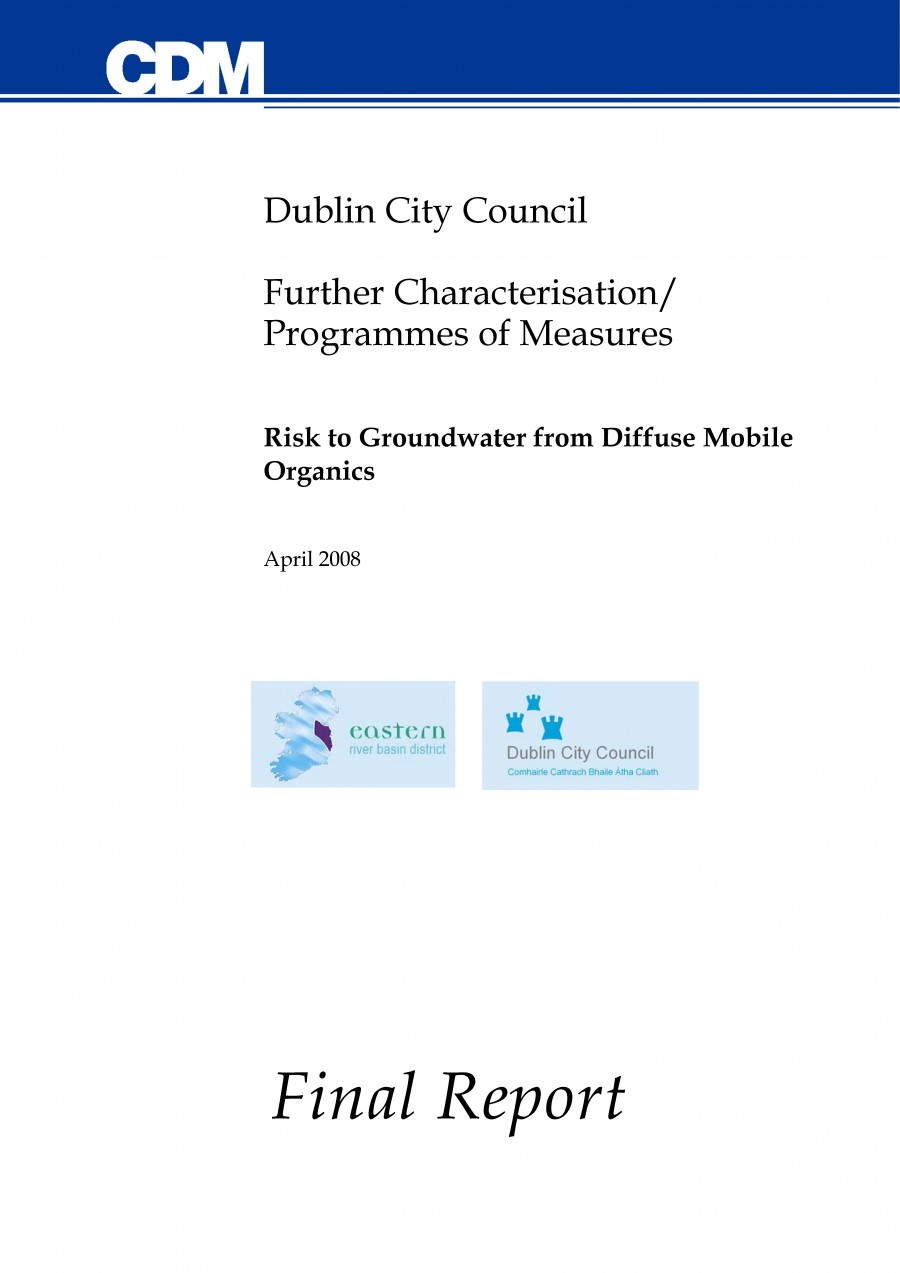Diffuse Mobile Organics (2008)

| Version | |
| Download | 30 |
| Stock | ∞ |
| Total Files | 1 |
| Size | 5.00 MB |
| Create Date | 29th August 2008 |
| Last Updated | |
A revised national assessment of risk to groundwater from diffuse mobile organics (DMOs) has been carried out in the Irish hydrogeological context. The original
Article V risk assessment that was submitted by the Environmental Protection Agency (EPA) to the European Commission (EC) in March 2005 was limited by the
availability of pressure information and understanding of environmental fate and transport characteristics of DMOs. The Eastern River Basin District (ERBD) project
was subsequently commissioned by Dublin City Council (DCC), on behalf of the Department of Environment, Heritage and Local Government (DEHLG), to study
risk to groundwater in greater detail, with the intent of informing future monitoring needs and a Programme of Measures required by the European Union (EU) Water Framework Directive (WFD).
The basic objectives and tasks of the study were to:
- Improve the understanding of pesticide-related pressures;
- Research fate and transport characteristics of commonly used pesticides;
- In the absence of groundwater monitoring data, develop and implement a risk assessment methodology that captures both the pressure information
and incorporates relevant physical factors that control leaching of pesticides from soil to groundwater.
For the purposes of the revised risk assessment, DMOs are broadly defined as pesticides. Pesticides are used in a wide array of settings, including agriculture, forestry, transportation, (urban) amenity, and industry. Detailed survey records of pesticide usage in the agriculture and forestry were obtained with the assistance of the Pesticide Control Service (PCS) and Coillte, respectively. Estimates for other sectors, including usage by local authorities, are less satisfactory, and rely on limited records, general literature, and information from interviews. Degrees and patterns of use by non-agricultural and non-forestry sectors therefore remain uncertain. Nonetheless, the available information suggests that the largest quantities of pesticides are used in the agricultural sector for pest and weed control.
| File | Action |
|---|---|
| DMO Final Report ISSUE_Low Res.pdf | Download |
Download





